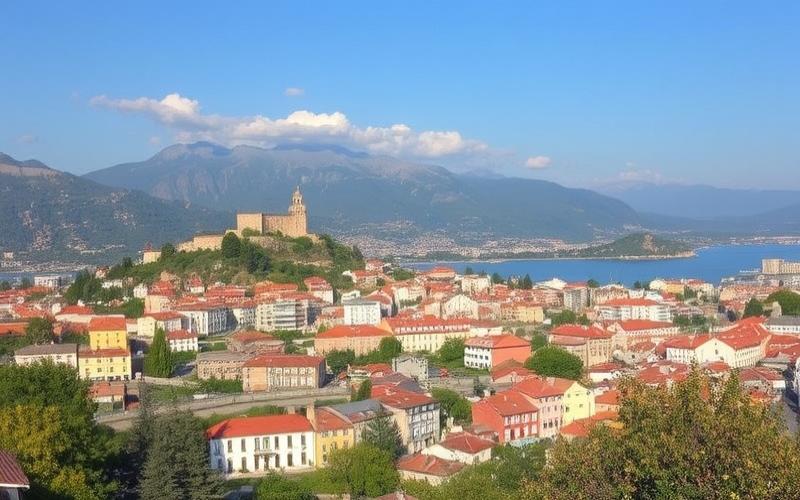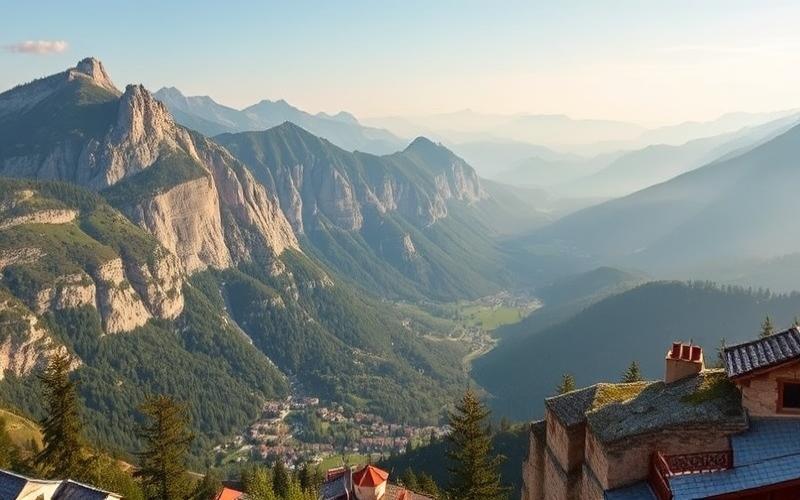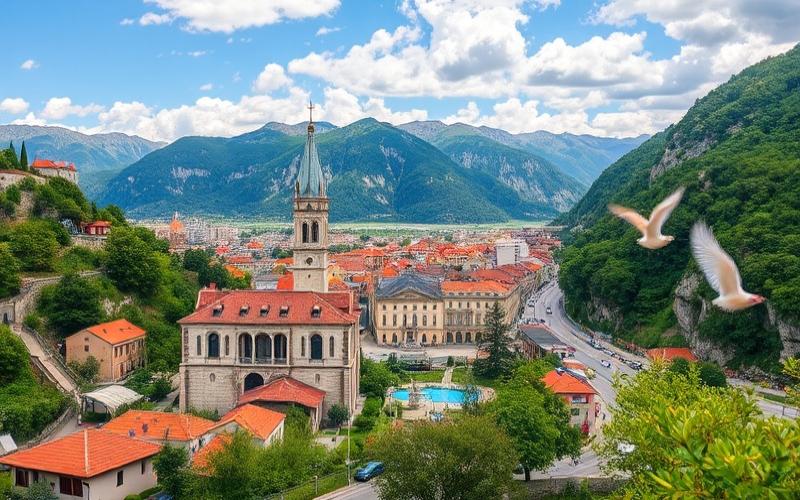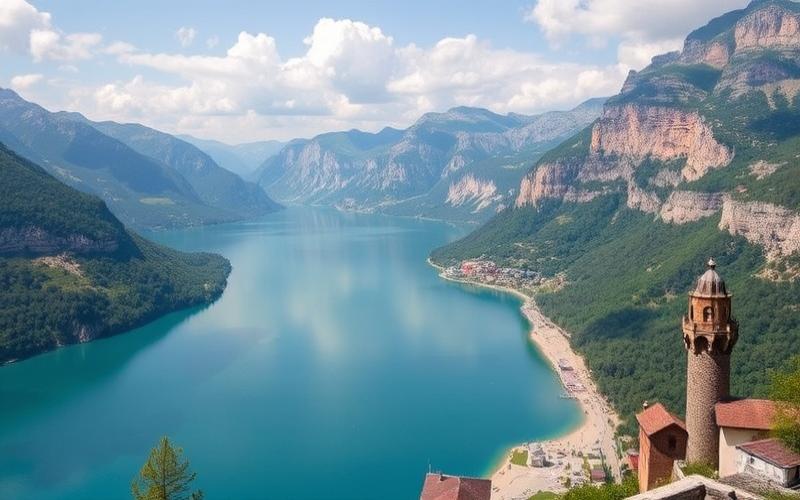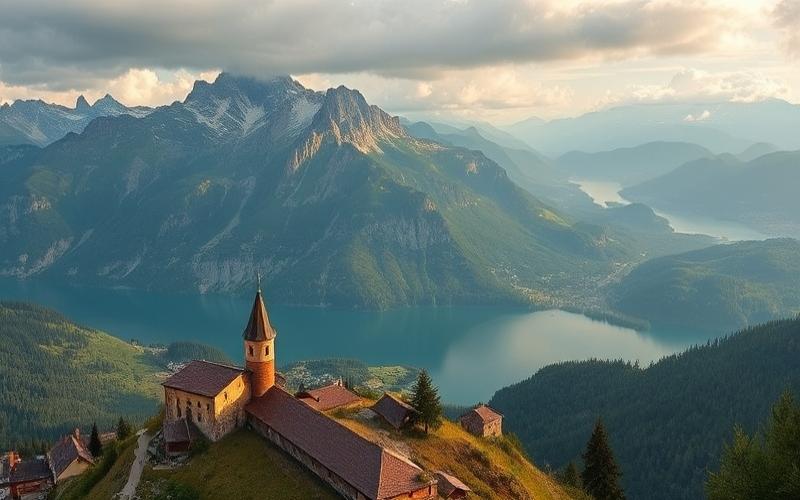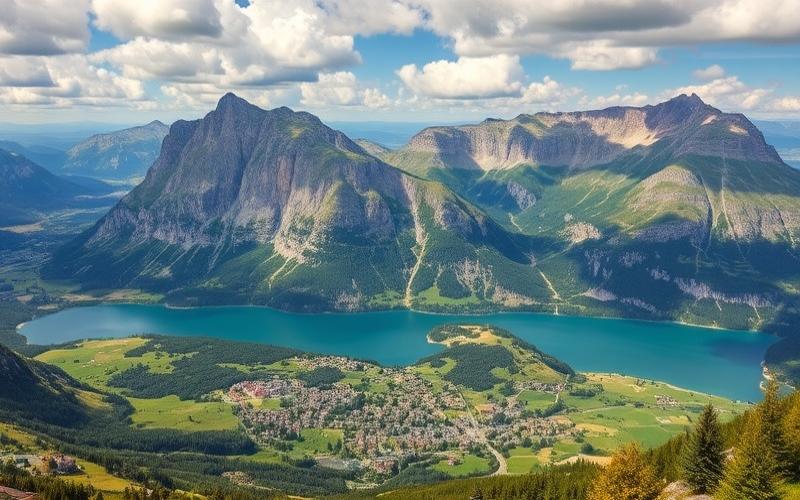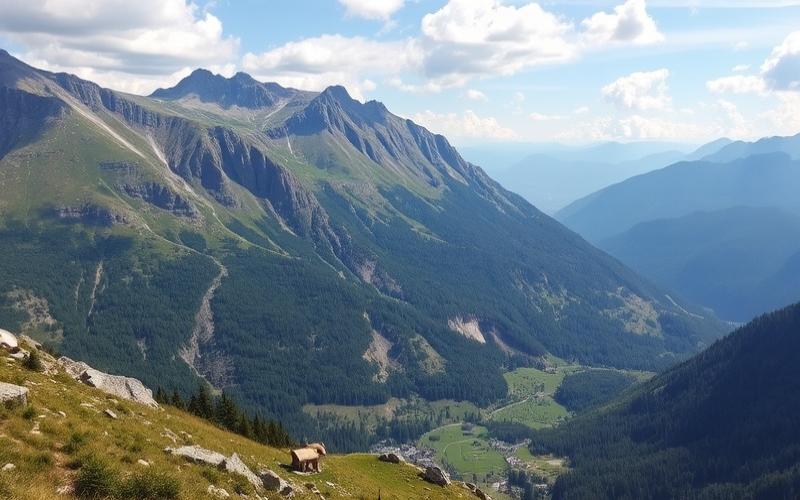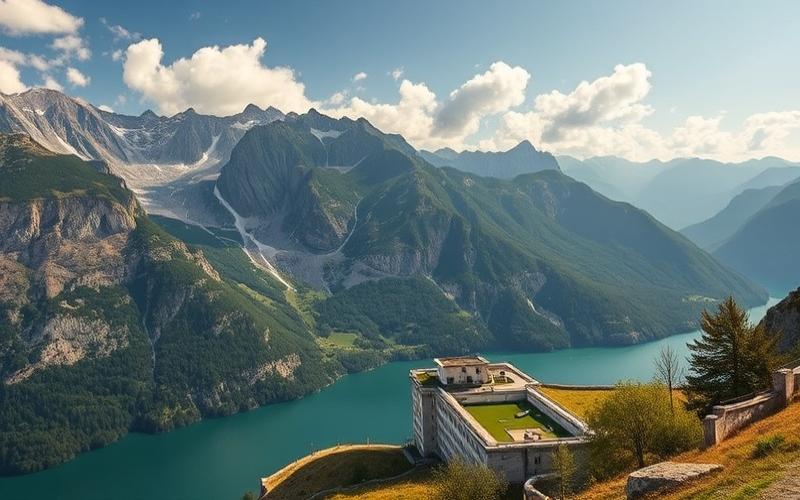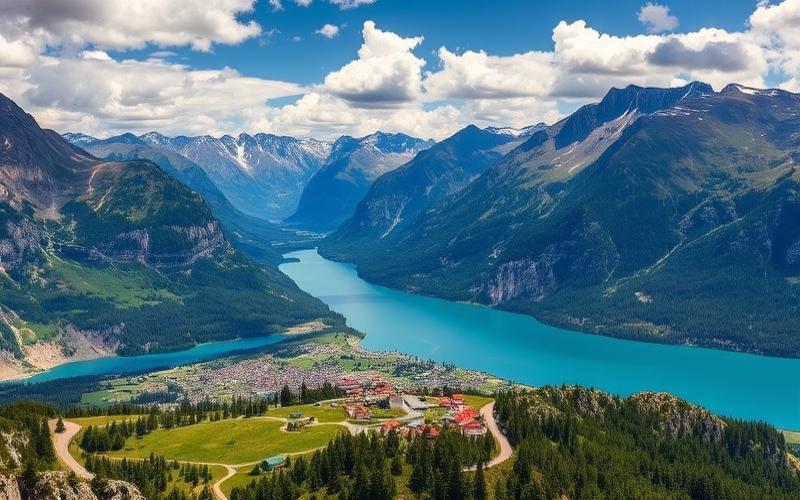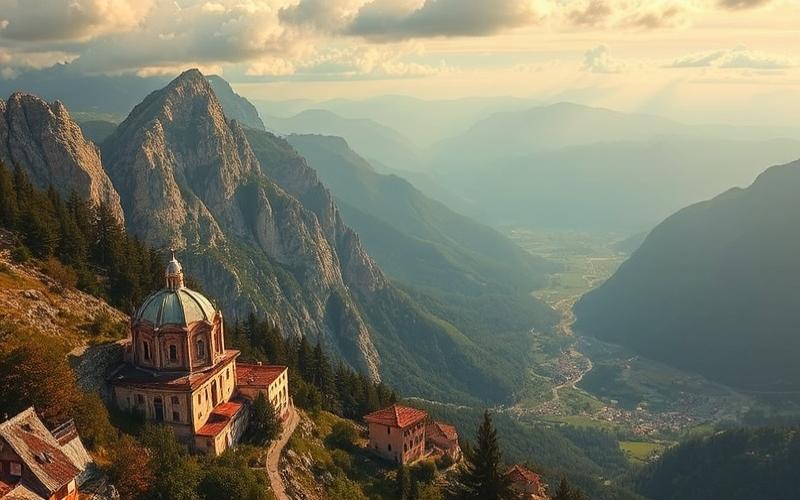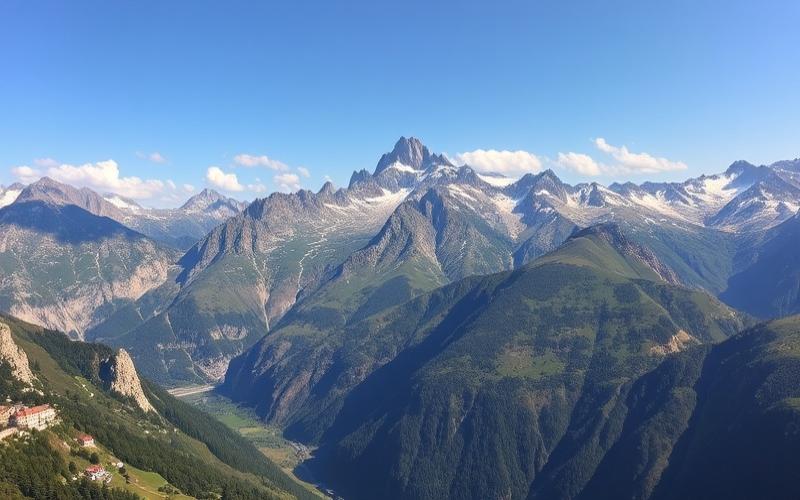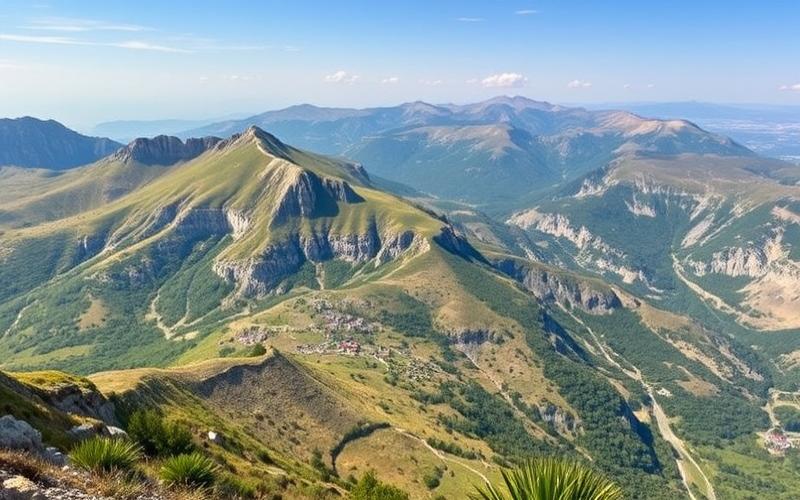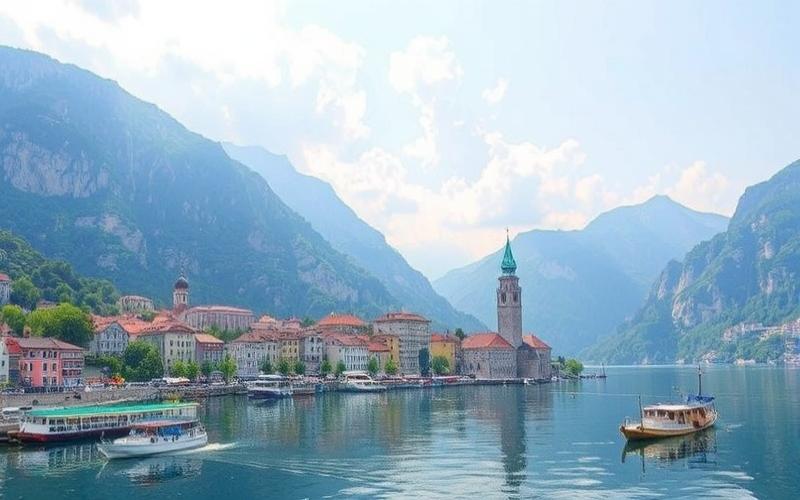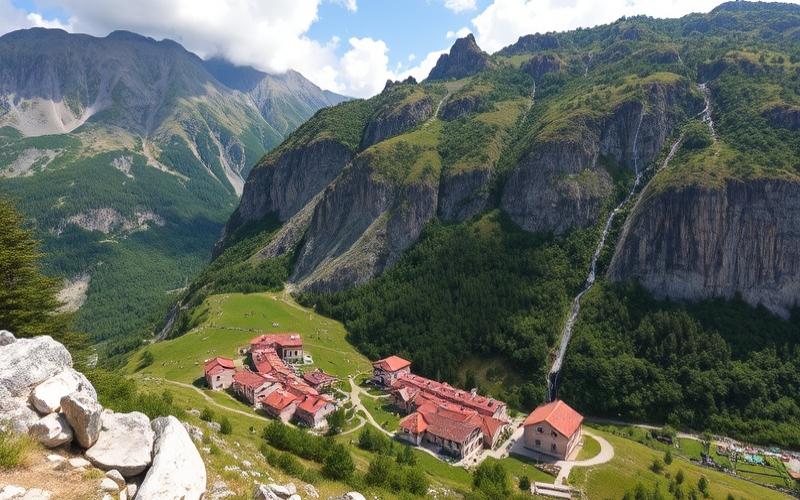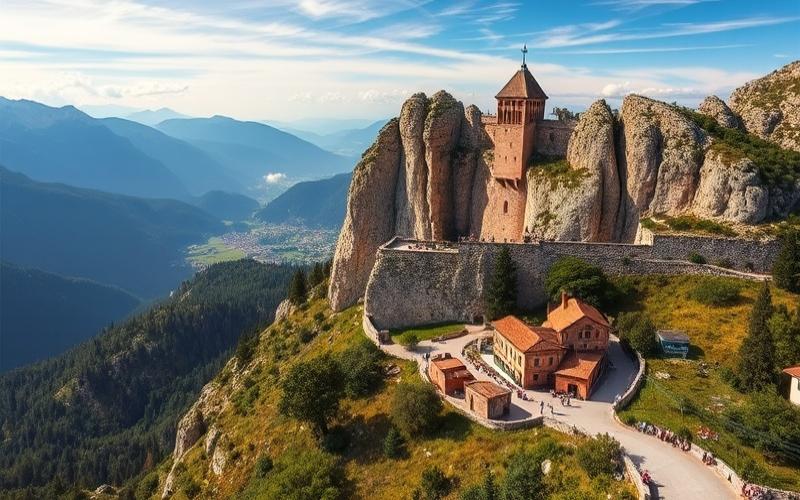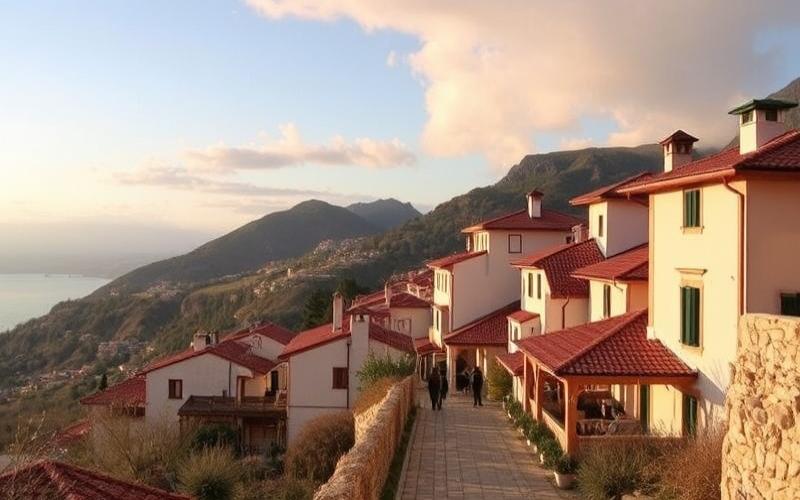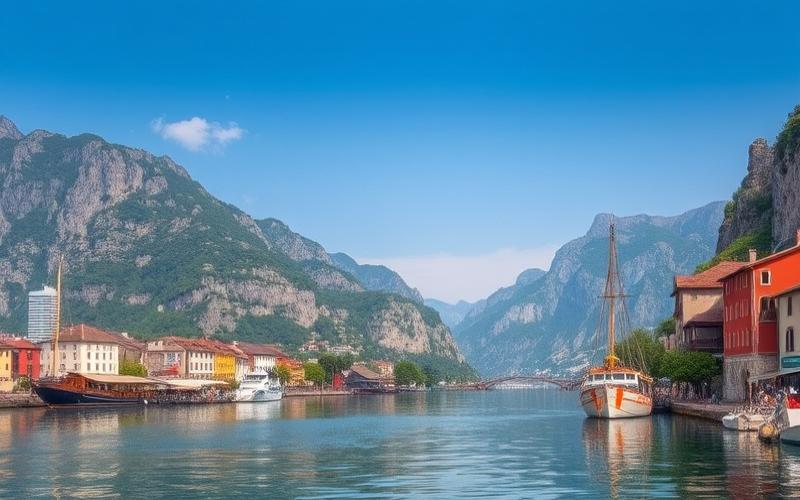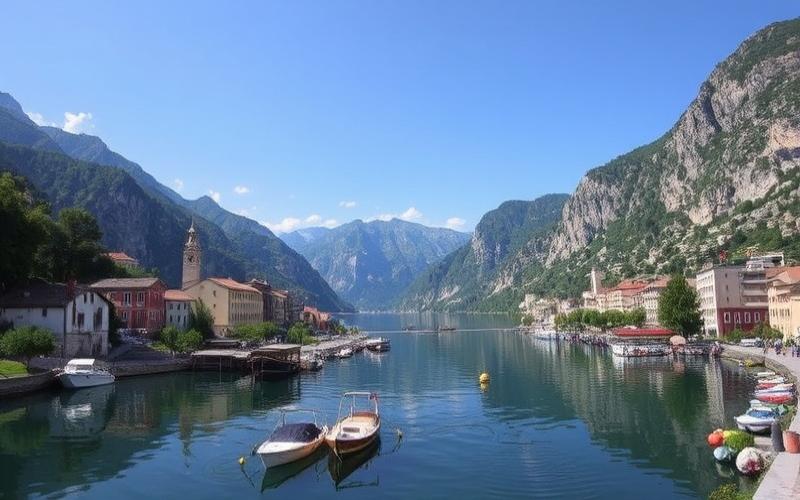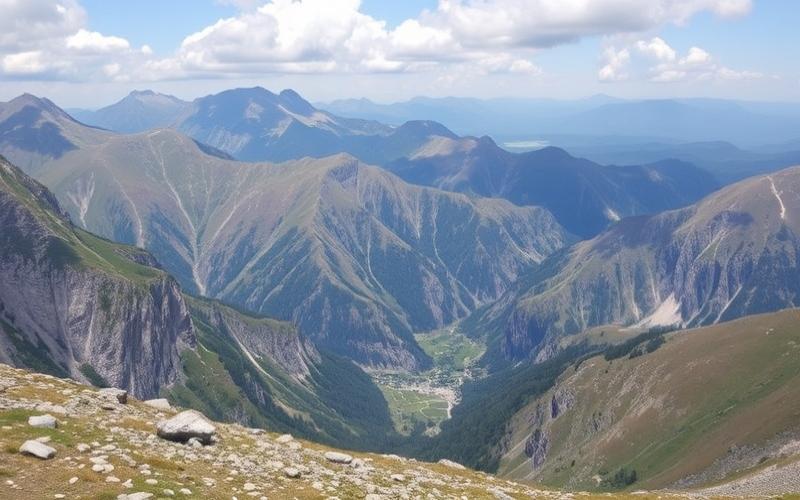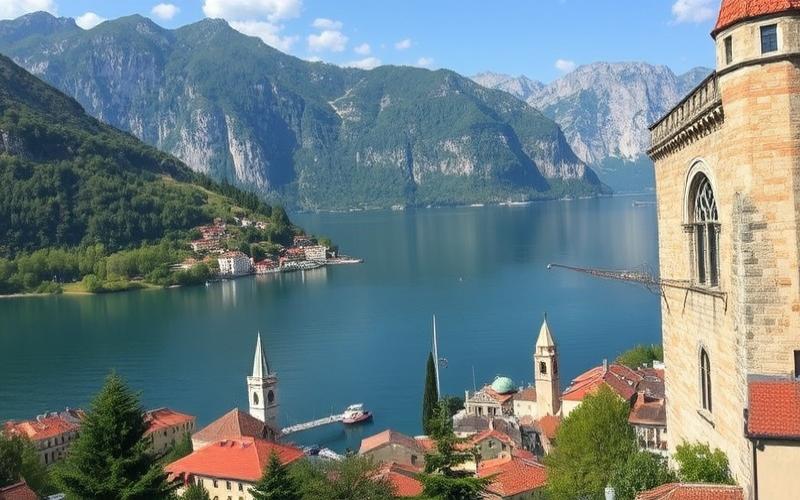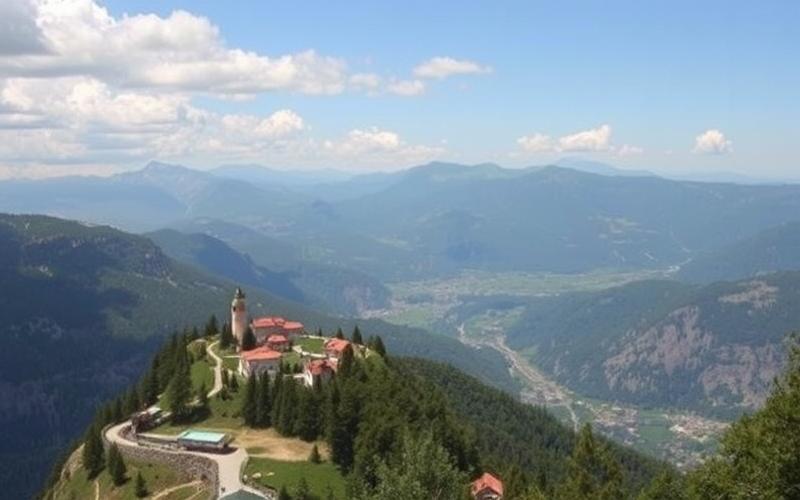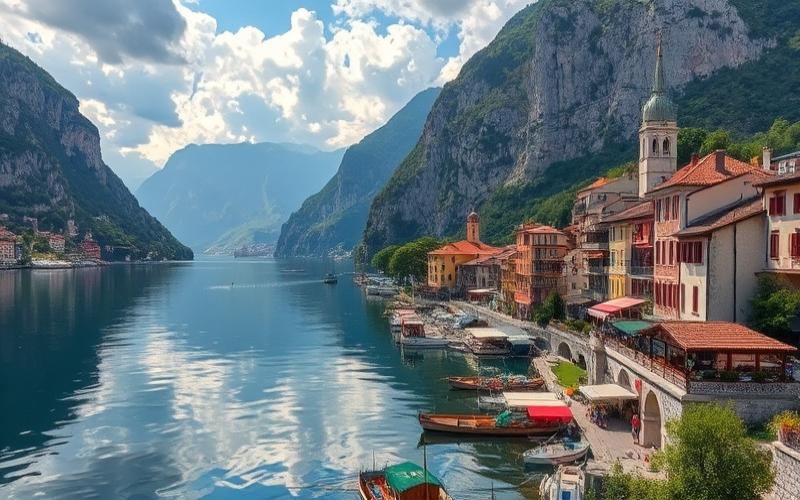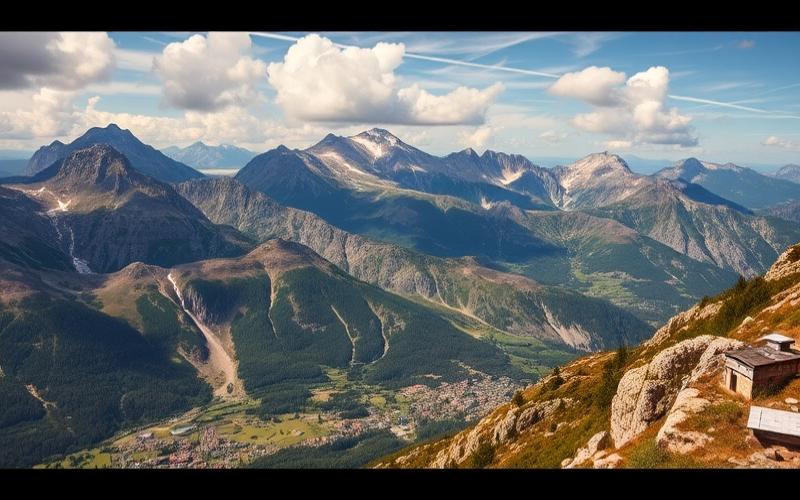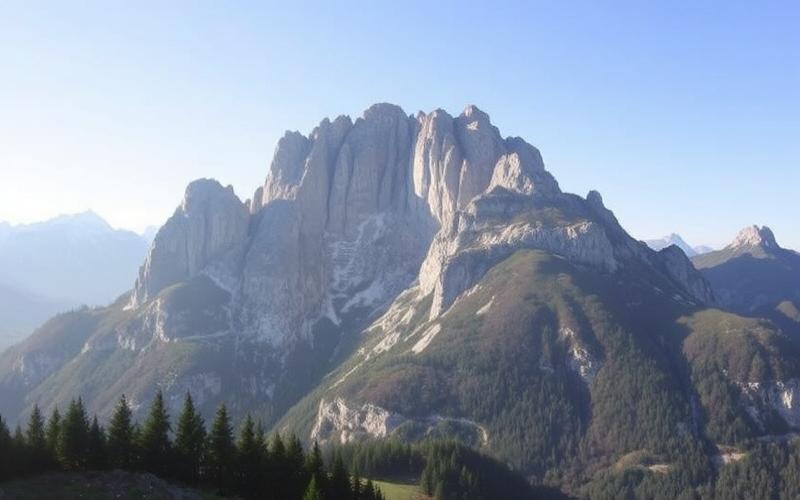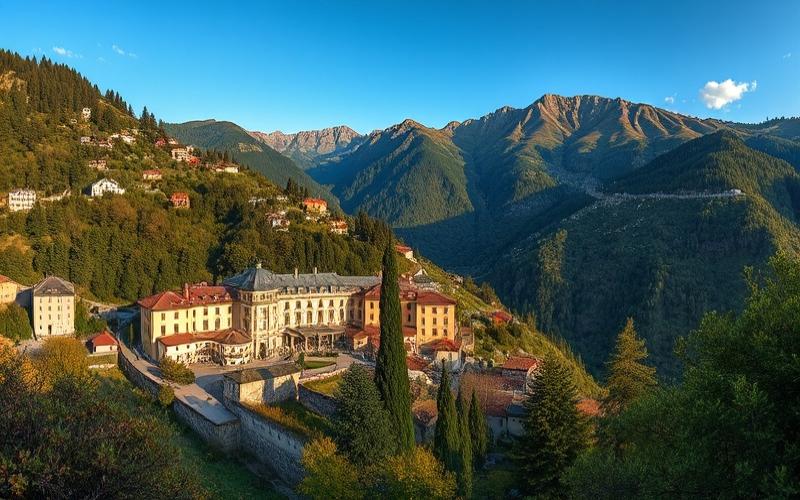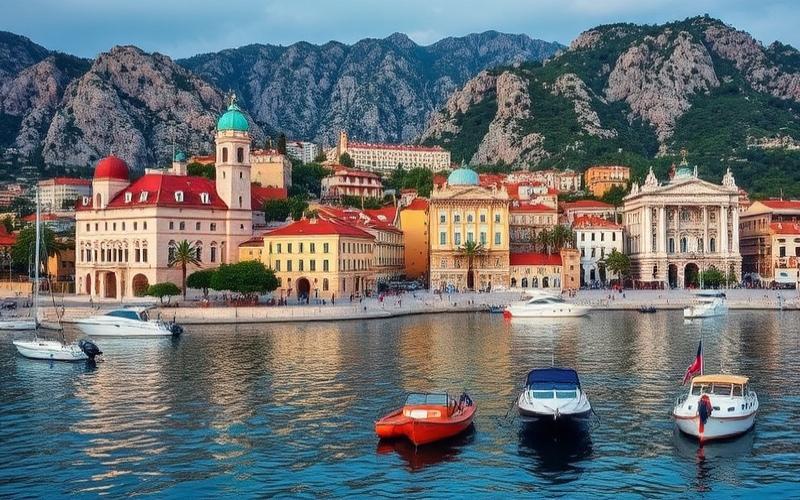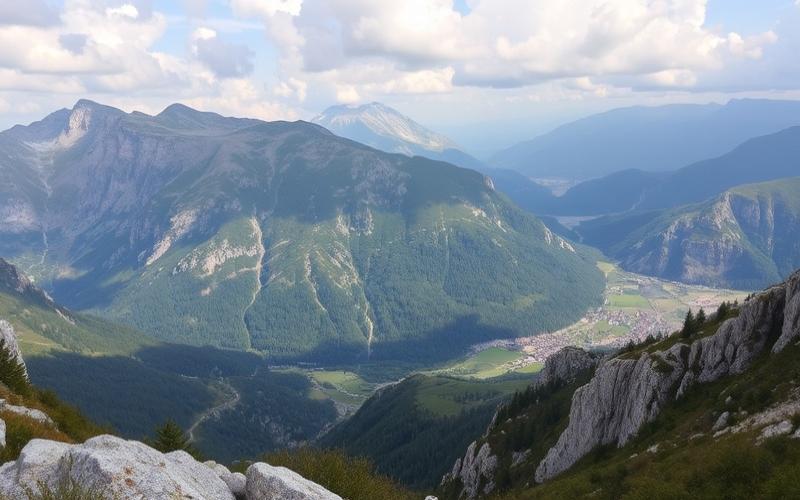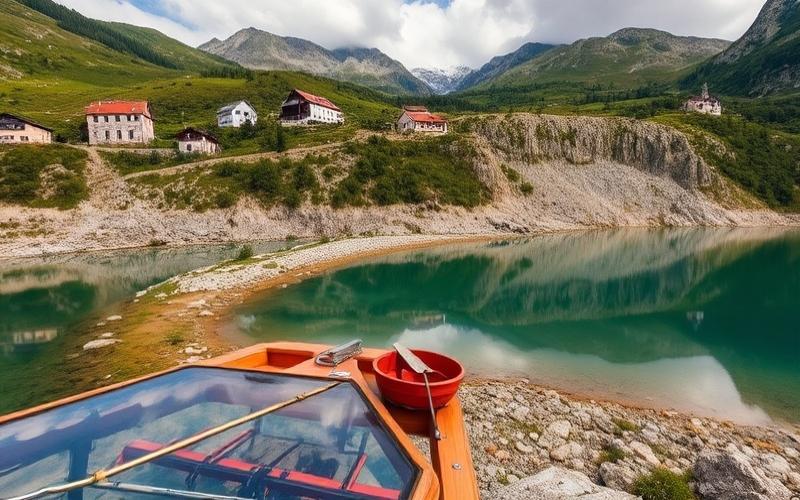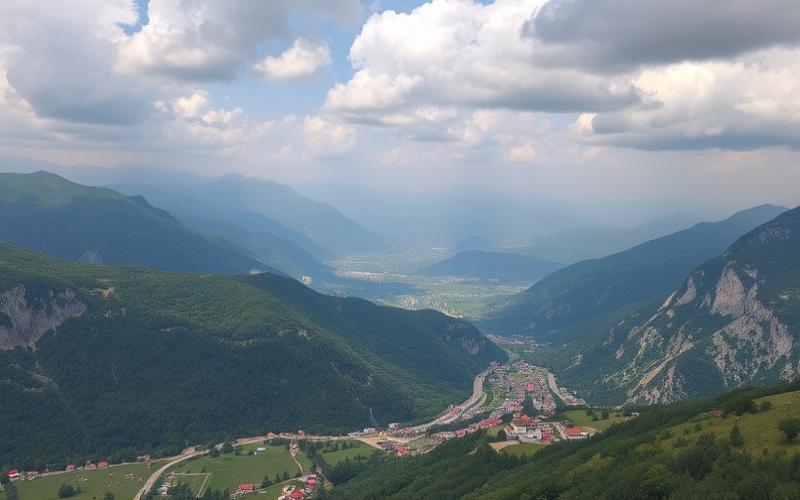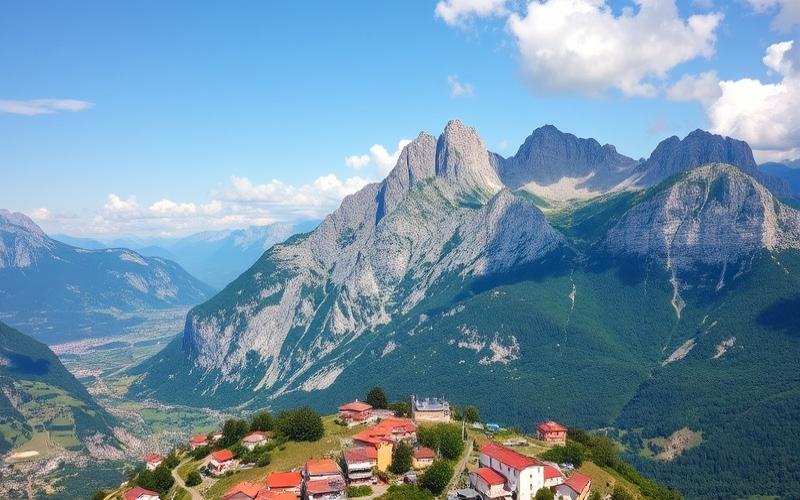
 Published on and written by Cyril Jarnias
Published on and written by Cyril Jarnias
In Montenegro, a country known for its picturesque landscapes and stunning coastlines, the concept of “micro-apartments” is emerging as an ingenious solution to the growing demand for affordable housing. Faced with rapid urbanization and rising real estate prices, young professionals and students are turning to these compact spaces, optimizing every square meter to meet essential needs while adhering to tight budgets.
This trend, influenced by successful models observed in other European countries, could well transform the local real estate market and offer a new perspective for Montenegrins aspiring to a modern and economical urban lifestyle.
The Micro-Apartment Phenomenon in Montenegro: A Growing Trend
Micro-apartments in Montenegro are emerging primarily in response to several economic and social factors:
- Rapid urbanization in major cities, particularly Podgorica, creating significant pressure on the real estate market.
- Rising real estate prices due to tourism growth and attractiveness to foreign investors.
- Difficulty accessing housing for young professionals and couples with limited budgets, exacerbated by increasing living costs and an underdeveloped financing system.
Table: Factors Driving the Emergence of Micro-Apartments
| Factor | Impact on the Market |
|---|---|
| Growing urbanization | Increased demand for city housing |
| High land prices | Need to optimize living space |
| Tourism appeal | Real estate speculation |
| Low purchasing power among youth | Search for affordable solutions |
Recent data shows that in urban centers like Podgorica, demand for compact housing has increased. Specialized real estate sales platforms report growing interest in this segment since 2023. This trend is also supported by legislation favorable to foreign investment.
Economic Benefits for Young Professionals and Couples:
- More affordable rent compared to traditional apartments
- Reduced expenses (heating, maintenance)
- Central location facilitating access to urban jobs
List: Major Economic Advantages
- Lower initial investment
- High rental profitability in a tight urban market
- Flexible adaptation to evolving needs (professional mobility)
Architectural and Urban Challenges Related to This Densification:
- Complex optimization of reduced spaces without sacrificing comfort or functionality
- Risk of social isolation if these dwellings become overly concentrated in certain neighborhoods
- Increased pressure on public infrastructure (transportation, green spaces)
Real Estate Developers’ Perspectives:
“The development of micro-apartments represents a pragmatic response to growing urban demand while maximizing square footage yield.”
Developers favor this segment because it enables rapid turnover of new housing stock with an attractive entry price for both local and foreign buyers.
Government Policies:
Some policies indirectly encourage this development through administrative or tax simplification related to rental investment. However, there are few specific measures strictly regulating these minimal surfaces; this could raise long-term quality issues regarding residential well-being.
In summary:
The rapid emergence of micro-apartments in Montenegro is driven by sustained urbanization, growing land pressure, and economic constraints faced by new earners. While these homes provide an economically viable solution for many, they nevertheless pose several urban planning challenges that both public authorities and private developers must anticipate to ensure harmonious development of Montenegro’s urban fabric.
Good to Know:
The micro-apartment trend in Montenegro, primarily motivated by economic factors such as rising real estate costs and the desire of many young professionals to live in cities, offers a viable solution for modest budgets. According to recent data, the real estate market shows growing demand for these optimized spaces, with developers responding by maximizing land use in dense urban centers. This dynamic is supported by government policies favoring urban densification, although it presents architectural challenges, particularly concerning infrastructure and potential loss of green spaces. Micro-apartments offer young couples and professionals an affordable housing option, though some experts warn of potential overcrowding and lack of specific regulations. Nevertheless, some innovative projects successfully transform these small spaces into comfortable homes, making micro-apartments an economical and practical alternative in Montenegro.
Profitable Investment: Why Choose a Studio in Montenegro
The studio market in Montenegro presents remarkable investment potential, characterized by relatively low acquisition costs compared to other European destinations. Micro-apartments in cities like Kotor, Budva, and their surroundings constitute an attractive financial opportunity for investors seeking to diversify their real estate portfolio.
Studios in Montenegro offer excellent value for money, with properties like Studios Belvi in Kotor, located right in the heart of the old town, offering clean spaces large enough for 2-3 people. These characteristics make them attractive options for both residents and tourists.
The rental potential of Montenegrin studios is significantly enhanced by the country’s growing tourist appeal. Establishments like Studio Happy Montenegro in Krašići, just a 4-minute walk from Krašići Beach, or the Lovely studio apartment on Montenegro Beach Side in Perazića Do, located steps from Perazica Do Beach, perfectly illustrate how strategic location near natural attractions increases rental value.
| Accommodation Type | Location | Features | Assets |
| Studios Belvi | Kotor Historic Center | Clean, suitable for 2-3 people | Premium location, UNESCO heritage |
| Studio Happy Montenegro | Krašići | Beach proximity (4 min) | Easy access to natural attractions |
| Studio-Apartments M&M | Becici (Budva) | 7 rooms, balcony, living area | Modern amenities, 5-minute drive to tourist sites |
Demand for affordable housing continues to increase, particularly among young professionals and students attracted by Montenegro’s relatively low cost of living. This trend is reinforced by the rise of remote work, allowing many European professionals to settle temporarily in this Mediterranean country.
Establishments like Studio-Apartments M&M in Becici offer essential modern amenities – free Wi-Fi, air conditioning, terrace, and equipped kitchen area – perfectly meeting contemporary tenant expectations. These features help maintain high occupancy rates throughout the year.
Montenegro’s constantly developing tourist infrastructure also contributes to the attractiveness of studio investments. Proximity to beaches, like the Budva Riviera located about a 25-minute walk from Studio-Apartments M&M, constitutes a major selling point for seasonal rentals.
- Tax benefits for foreign investors
- Simplified purchasing procedures compared to other European countries
- Significant appreciation potential in developing areas
- Competitive rental yields (typically between 6% and 10% annually)
Local regulations regarding real estate purchase in Montenegro are relatively favorable to foreign investors, with few restrictions on ownership. However, it’s essential to familiarize yourself with specific requirements concerning tourist rental permits, particularly in highly frequented coastal areas like Budva.
In 2025, Montenegro’s real estate market continues its upward trajectory, stimulated by the country’s gradual integration into European structures and constant infrastructure improvements. Prices remain competitive compared to other Mediterranean destinations, thus offering a window of opportunity for investors before likely significant property value appreciation.
Good to Know:
Investing in a studio in Montenegro can prove particularly profitable thanks to relatively low acquisition costs compared to other European countries and a booming real estate market. Micro-apartments meet growing demand for affordable housing, particularly among young professionals and students attracted by the low cost of living. Montenegro also attracts many tourists, thereby increasing profitability potential for seasonal rentals. According to recent data, rental yields can reach up to 8%, and concrete examples show that some investors have doubled their initial investment in just a few years. Nevertheless, it’s crucial to consider local regulations governing the purchase and rental of these properties, although the environment is generally favorable to international investors.
Microliving in Montenegro: The Future of Small Spaces
Microliving is emerging in Montenegro as an innovative response to the affordable housing crisis, driven by rapid increases in real estate prices, particularly in coastal and urban areas. While the average price per square meter in new constructions surged 20% in one year to reach €1,844 in 2025, demand for more compact and accessible solutions is intensifying.
Financial and Ecological Benefits
- Significant reduction in total acquisition cost due to limited square footage.
- Lower maintenance fees: reduced heating, cleaning, and common charges.
- Faster and less expensive construction, with possibility of using ecological or modular materials.
- Reduced carbon footprint (fewer materials used, lower energy consumption).
- Reduced property taxes for some green projects.
| Advantage | Financial Impact | Ecological Impact |
| Reduced surface area | Lower purchase price | Fewer resources used |
| Simplified maintenance | Low charges | Energy savings |
| Modular construction | Reduced investment | Increased recyclability |
Local Initiatives & Ongoing Projects
Real estate developers are now integrating micro-apartments with smart home or advanced energy solutions into their programs. New residences particularly target young local professionals as well as expatriates attracted by Montenegro’s economic dynamism. Areas such as Podgorica or Tivat are seeing these initiatives flourish, which also align with national policy promoting environmental sustainability.
Impact on the Real Estate Market
Soaring prices are stimulating interest in these compact homes:
- Notable increase in transaction volume in the micro-apartment segment.
- Diversification of buyer profiles: young local households, foreign investors seeking affordable pied-à-terre or profitable seasonal rentals.
- Progressive optimization of existing housing stock facing approximately 120,000 vacant units recorded (often underutilized during off-tourist season).
Recent Statistics
In 2025:
- New construction sector prices are progressing twice as fast as existing properties (+20% vs +8 to +10% depending on region).
- Rental demand is being driven upward by growing scarcity of functional small spaces adapted to new urban lifestyles.
Induced Changes in Lifestyles
Residents are gradually adopting lifestyles focused on:
- Intelligent optimization of every square meter,
- Shared usage (mutualized common spaces),
- Increased mobility between coastal cities and economic centers,
- Prioritizing material minimalism in favor of collective experiences.
Cultural & Legal Challenges
Several challenges remain:
- Slow adaptation of mentalities attached to spacious family property,
- Urban planning standards sometimes unsuitable for very small surfaces,
- Need for regulatory modernization to establish minimum quality, safety, and adapted taxation for micro-housing,
- Still incomplete social acceptance of this new residential model perceived as transitional rather than permanent.
Microliving is already shaping a new residential dynamic in Montenegro—between immediate economic necessity and sustainable transition toward compact cities. The challenge will be as much social as urbanistic.
Good to Know:
Microliving in Montenegro stands out as an ideal solution to increasing demand for affordable housing, particularly in a booming urban context. These micro-apartments, often representing less than 30 square meters, offer significant financial benefits by reducing construction and maintenance costs, capitalizing on optimized architecture and green technologies. Projects like the development in Sutomore and other urban initiatives are actively exploring these small housing units to counter soaring real estate prices. According to recent data, demand for these compact dwellings has increased 15% annually, reflecting a lifestyle shift toward more minimalism. However, large-scale adoption of microliving in Montenegro faces certain cultural challenges, such as traditional preferences for larger spaces, as well as legal issues related to construction standards. To better integrate into the market, these projects must clarify regulations and strengthen cultural acceptability through awareness campaigns.
Disclaimer: The information provided on this website is for informational purposes only and does not constitute financial, legal, or professional advice. We encourage you to consult qualified experts before making any investment, real estate, or expatriation decisions. Although we strive to maintain up-to-date and accurate information, we do not guarantee the completeness, accuracy, or timeliness of the proposed content. As investment and expatriation involve risks, we disclaim any liability for potential losses or damages arising from the use of this site. Your use of this site confirms your acceptance of these terms and your understanding of the associated risks.

